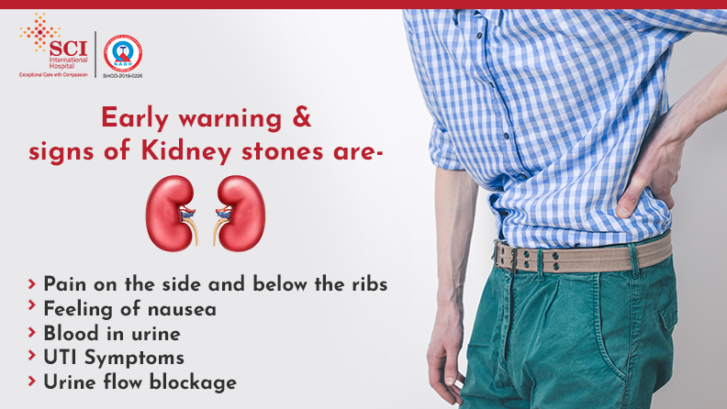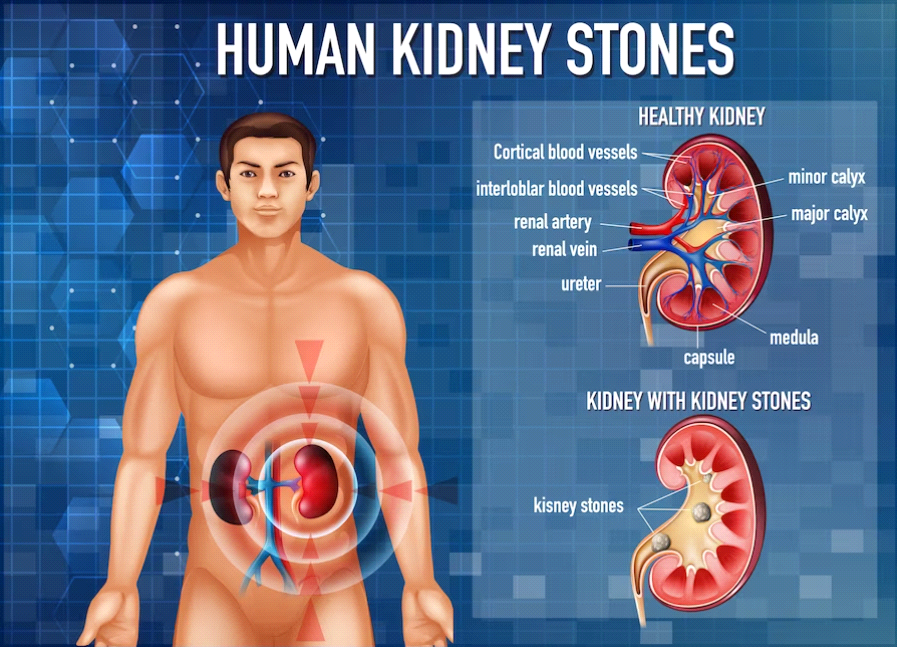Kidney Stone Symptoms: What Your Body Might Be Trying to Tell You

kidney stone symptoms are more common than most people think. In fact, they affect around 1 in 10 people at some point in their lives. While some pass through your urinary tract without you even knowing, others can cause severe pain and a range of symptoms that definitely catch your attention. In this article, we’ll break down everything you need to know about kidney stone symptoms, how they show up, and when it’s time to get medical help.
What Are Kidney Stones, Exactly?
Before we dive into the symptoms, let’s clear up what kidney stone symptoms are. kidney stone symptoms are hard deposits made of minerals and salts that form inside your kidneys. They can vary in size, from tiny grains to larger, pebble-sized stones. Most are made of calcium oxalate, but others might contain uric acid, cystine, or struvite.
kidney stone symptoms form when your urine becomes concentrated, allowing minerals to stick together and crystallize. Dehydration, diet, genetics, and certain medical conditions can all increase your risk. Once formed, these stones may stay in the kidney stone symptoms or move into the ureter — that’s when symptoms typically start to kick in.
The Classic Sign: Intense Pain

The most well-known and unmistakable symptom of a kidney stone is severe pain. This isn’t your average stomach ache — we’re talking about sudden, intense pain that often comes in waves.
Pain typically starts in the back or side, just below the ribs, and can radiate to the lower abdomen and groin. If the stone moves, the pain shifts too. This happens because the stone is trying to travel through the narrow ureter, which causes spasms and irritation.
Some people describe the pain as sharp, stabbing, or cramping. It can come and go in waves that last 20–60 minutes. If you’ve ever heard someone say kidney stone pain is worse than childbirth — they’re not exaggerating.
Urinary Changes You Shouldn’t Ignore
Changes in urination are another big clue that you might have a kidney stone symptoms. Since the stone often blocks part of your urinary tract, your body reacts in several ways.
You might feel a constant urge to pee, but only manage to pass a little at a time. This urgency and frequency are especially common if the stone is near the bladder. You may also feel a burning sensation while urinating, which can easily be mistaken for a urinary tract infection (UTI).
Another red flag is blood in the urine, also called hematuria. Your pee might look pink, red, or brown, depending on how much blood is present. This happens because the stone is scraping the lining of your urinary tract as it moves. If you see discolored urine or cloudy urine with a strong odor, don’t brush it off — it could signal a kidney stone or a
Nausea and Vomiting: An Unexpected Combo

A lot of people don’t associate nausea and vomiting with kidney stone symptoms, but these are surprisingly common symptoms. This happens because of the way the kidney stone symptomsvand digestive system share nerve connections. When your body is in pain or under stress (like from a moving stone), it can trigger a nausea response.
You might feel sick to your stomach, or even throw up — especially if the pain is severe. If the kidney kidney stone symptoms is large or stuck, the nausea can get worse and make it hard to eat or drink anything.
In some cases, nausea and vomiting are also signs of an infection or a blockage. Either way, they’re not symptoms you want to ignore.
Fever and Chills: Warning Signs of Infection
Most kidney stones don’t cause a fever, but if you develop a fever and chills, it could mean you have an infection in your kidney or urinary tract. This is a serious complication and needs immediate medical attention.
A kidney infection (also called pyelonephritis) can happen if the stone causes a blockage that traps bacteria in your urinary system. Along with a fever, you may notice worsening pain, fatigue, and confusion — especially in older adults.
Never wait it out if you have a fever and suspect a kidney stone. A kidney infection can spread to the bloodstream and become life-threatening if untreated.
Other Possible Symptoms That Fly Under the Radar
While pain and urinary changes are the main symptoms, some other signs of kidney stones are more subtle. Fatigue is common, especially if you’re losing sleep due to pain or dealing with a low-grade infection.
Some people feel bloated or have trouble sitting still because of the discomfort. You may also notice sweating, restlessness, or a general feeling of unease — this is your body’s response to the stress of the stone.
In rare cases, kidney stones can cause swelling in the abdomen or groin, especially if the urinary system is backed up. If this happens, it’s another signal that things aren’t flowing normally and should be checked out.
When to See a Doctor
It’s easy to confuse kidney stone symptoms with other issues like UTIs, muscle strains, or even appendicitis. So how do you know when it’s serious?
You should see a doctor immediately if you:
- Have severe pain that doesn’t go away
- Notice blood in your urine
- Can’t urinate
- Have a fever or chills
- Experience nausea and vomiting that won’t stop
Doctors usually diagnose kidney stones with a CT scan or ultrasound and may recommend pain relief, hydration, or, in some cases, surgery. The sooner you get checked out, the faster you can get relief and prevent complications.
Conclusion: Know the Signs, Protect Your Health
Kidney stones aren’t always preventable, but knowing the symptoms can help you catch them early and avoid serious problems. From sharp back pain to changes in urination, your body gives plenty of clues when something’s not right.
Staying hydrated, watching your diet, and listening to your body can go a long way in preventing kidney stones or catching them before they cause too much trouble. If you ever feel unsure about your symptoms, don’t wait — trust your gut and talk to a healthcare provider. It’s always better to be safe than sorry when it comes to your kidneys.



